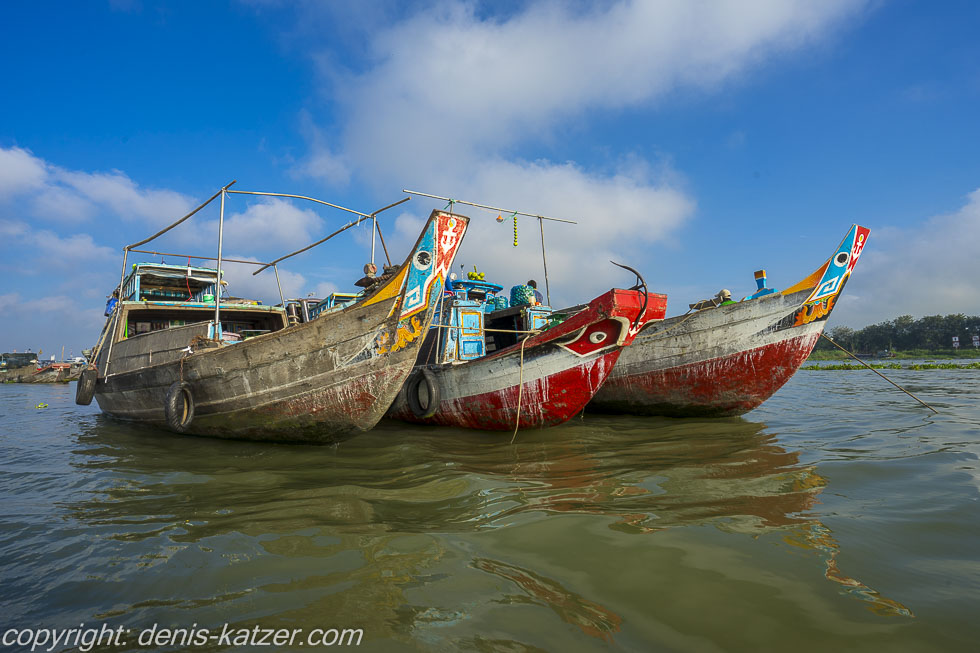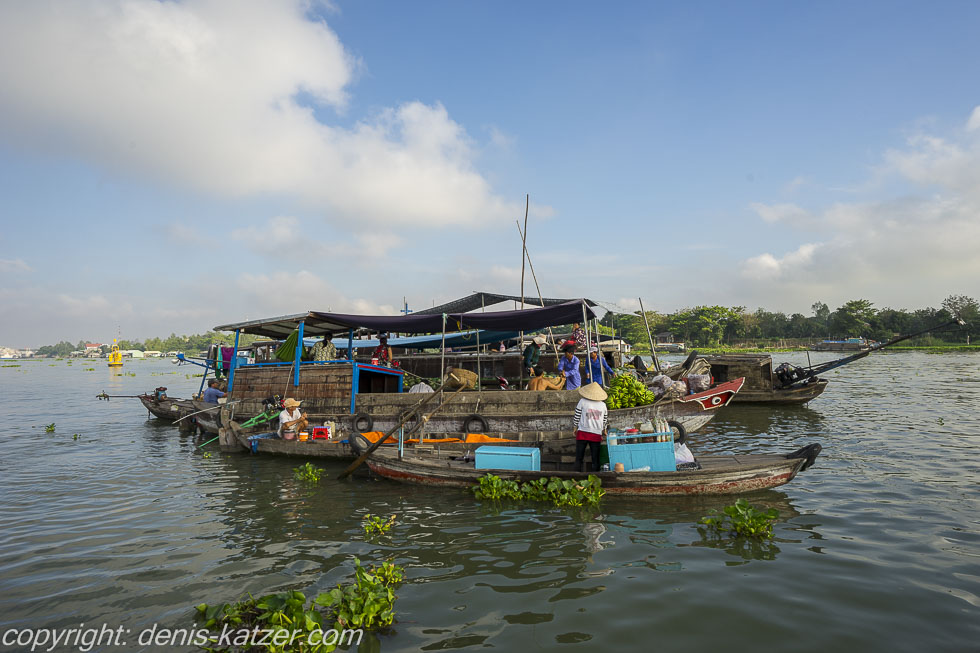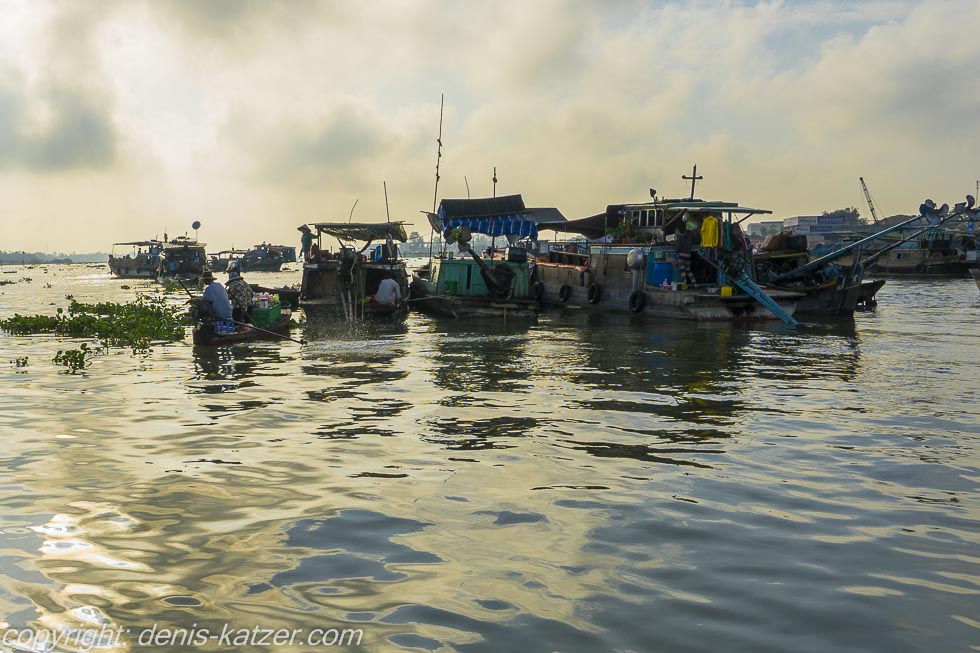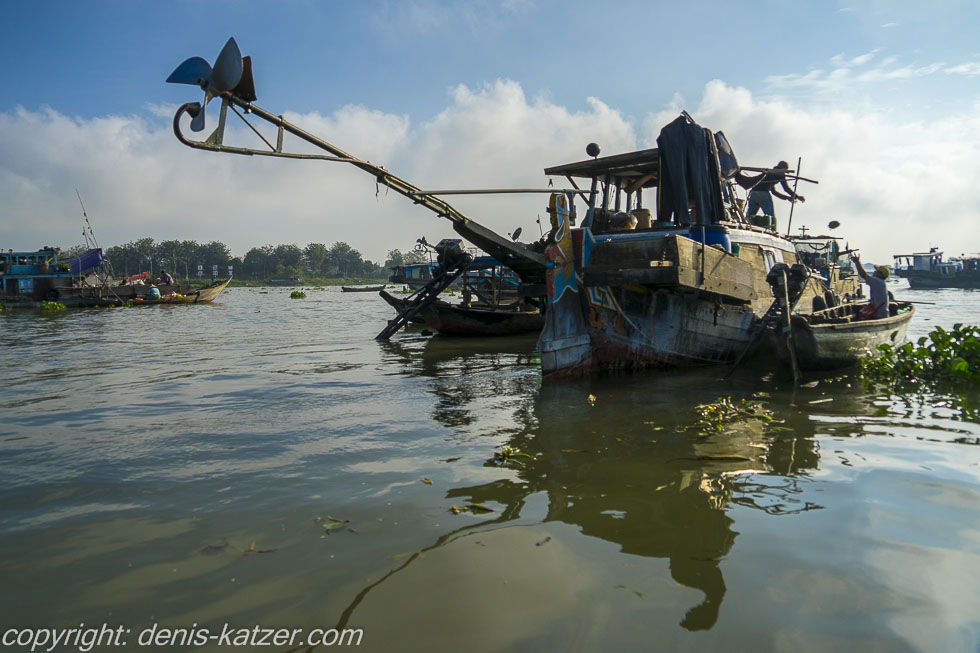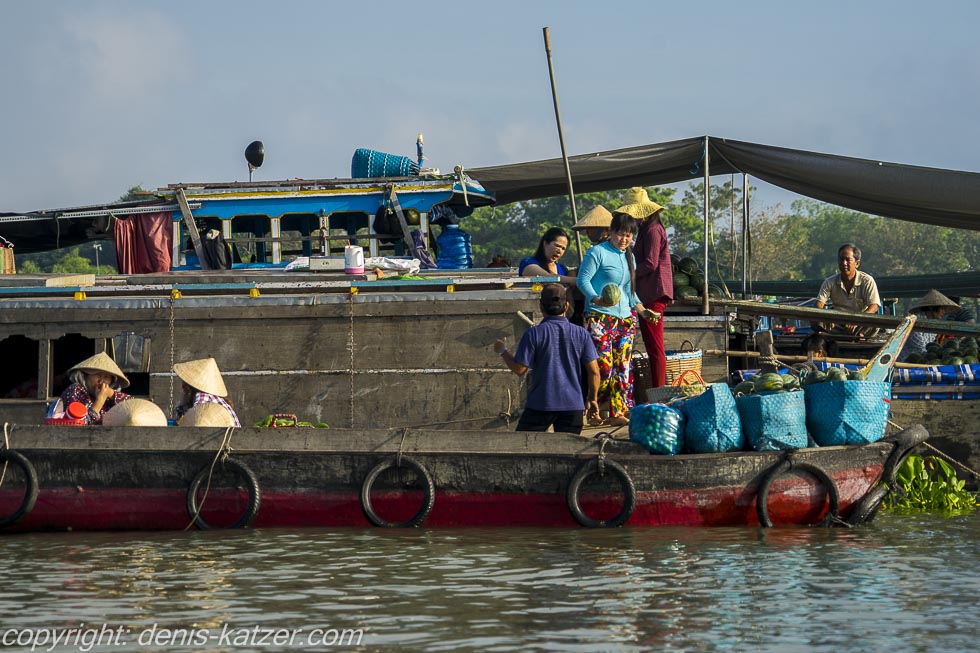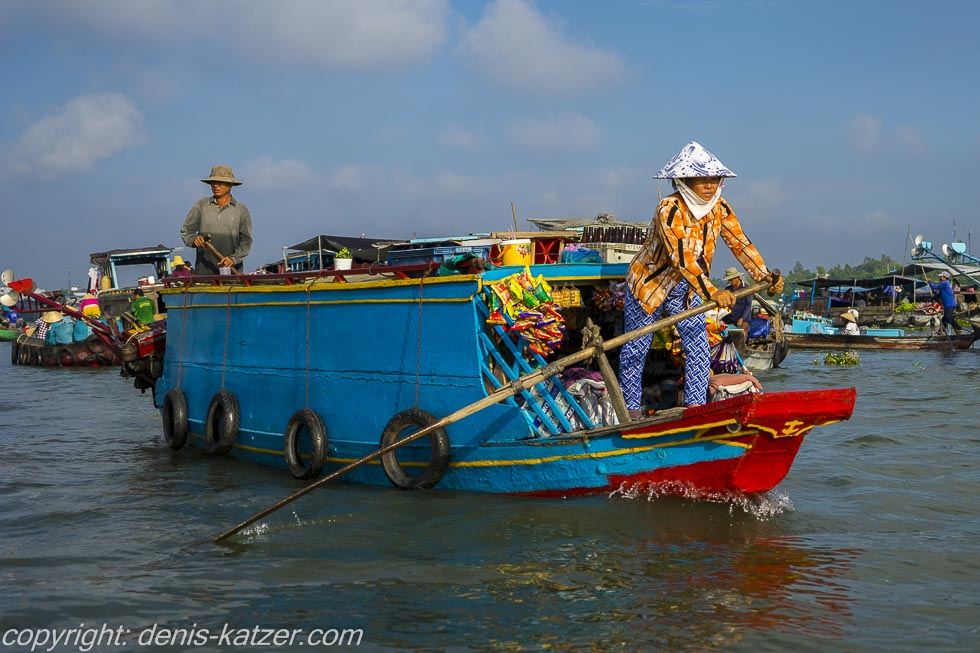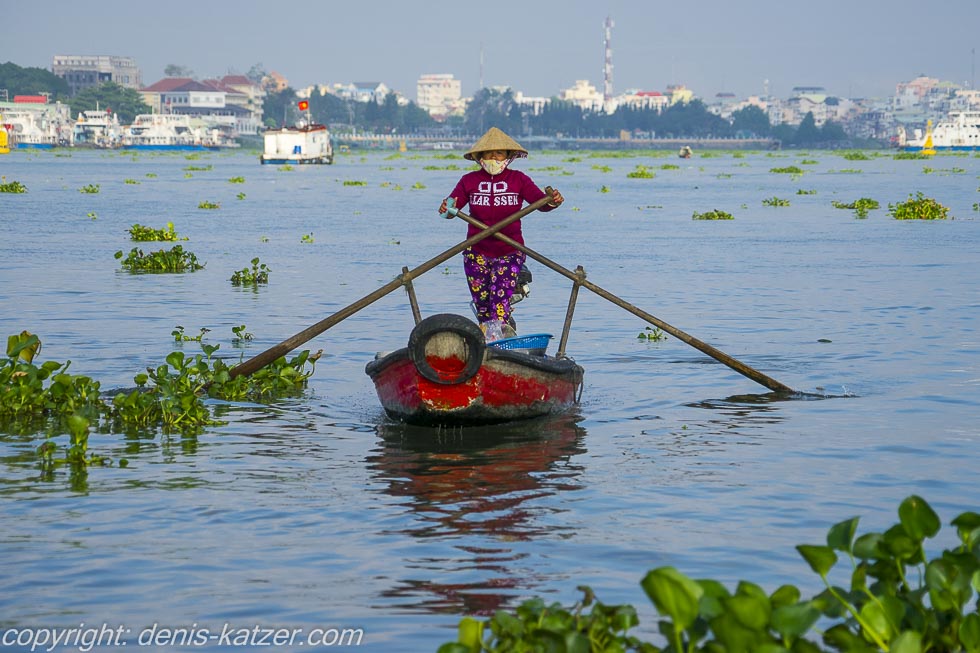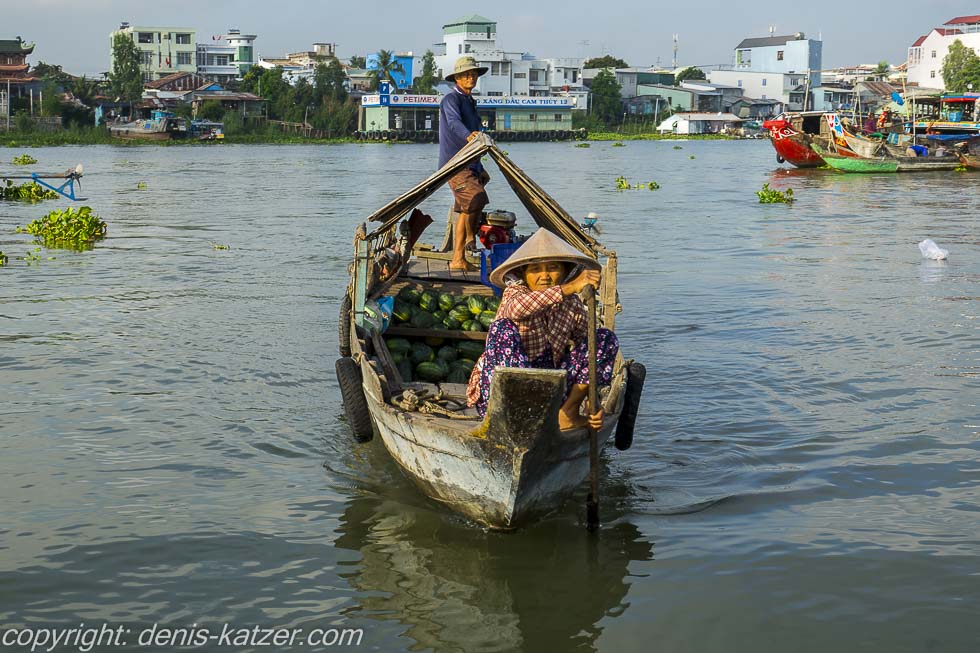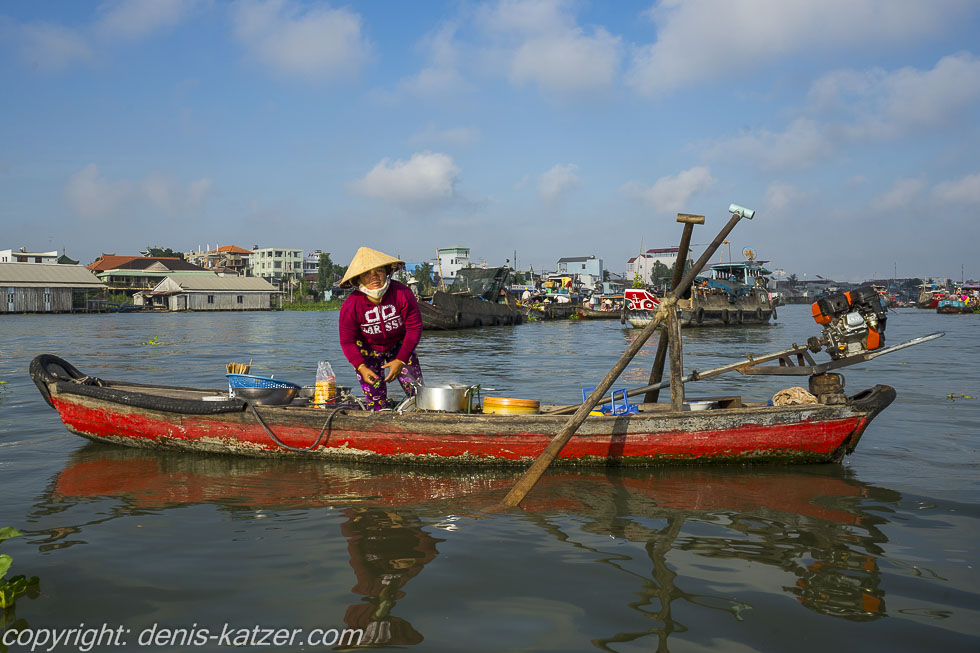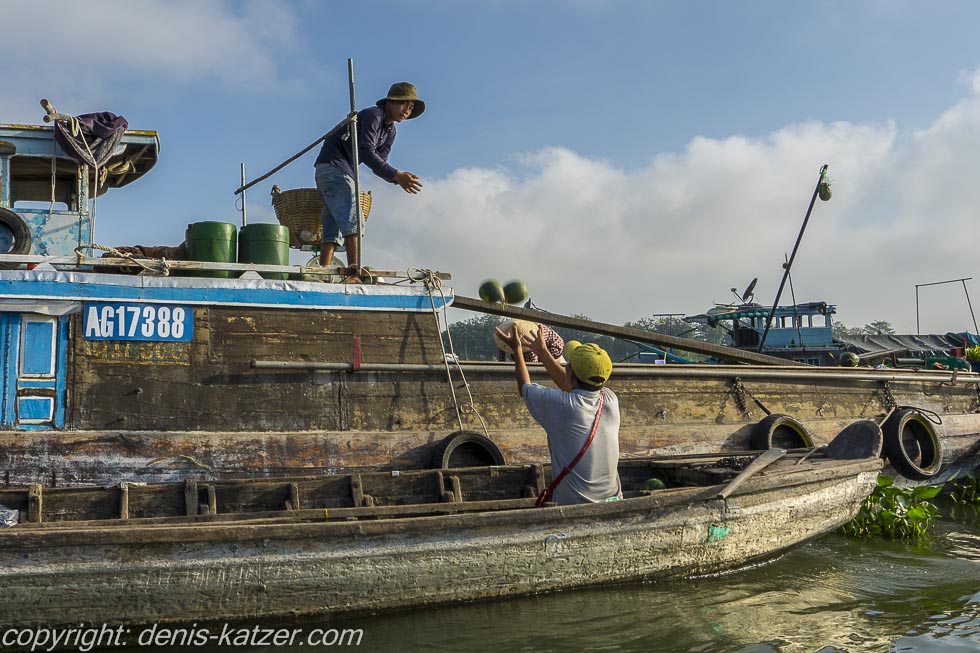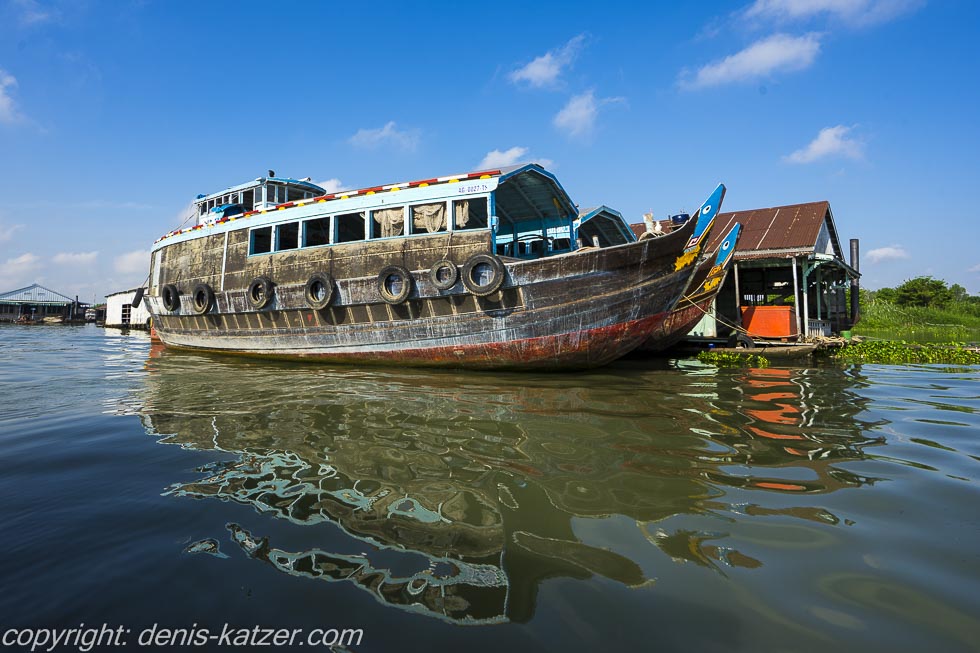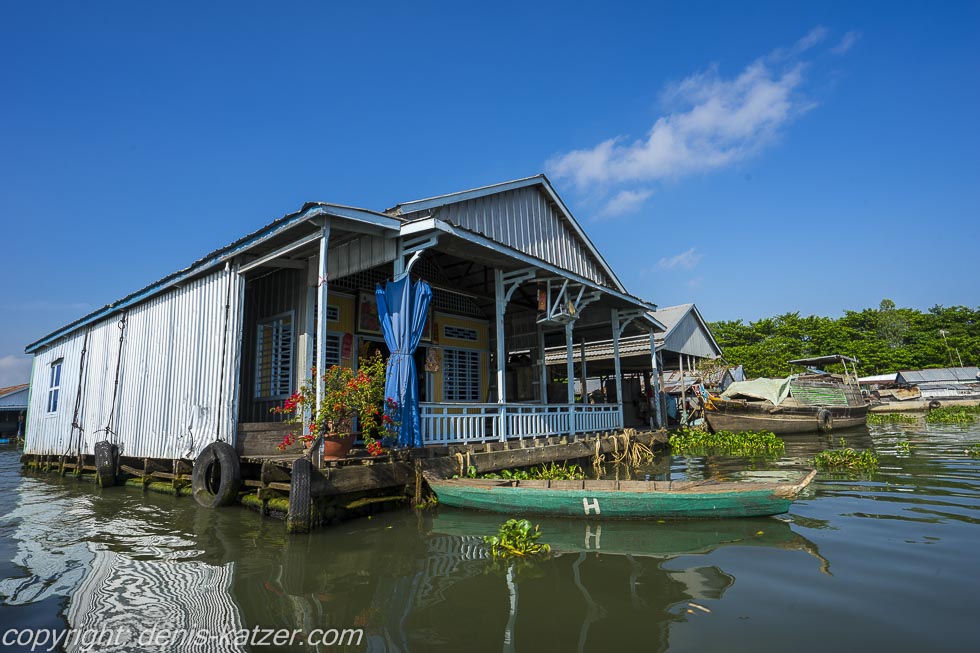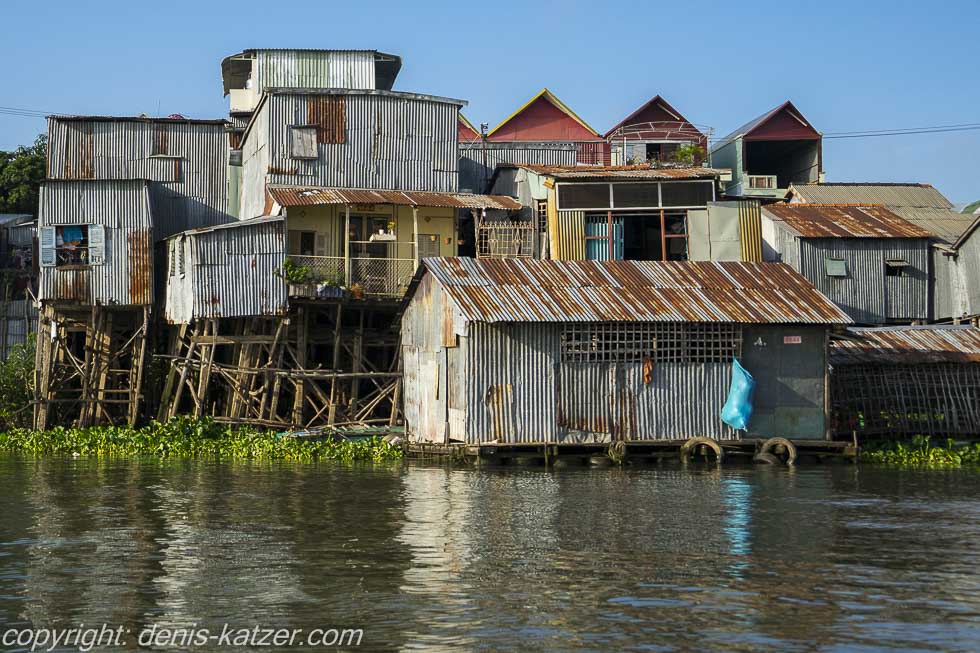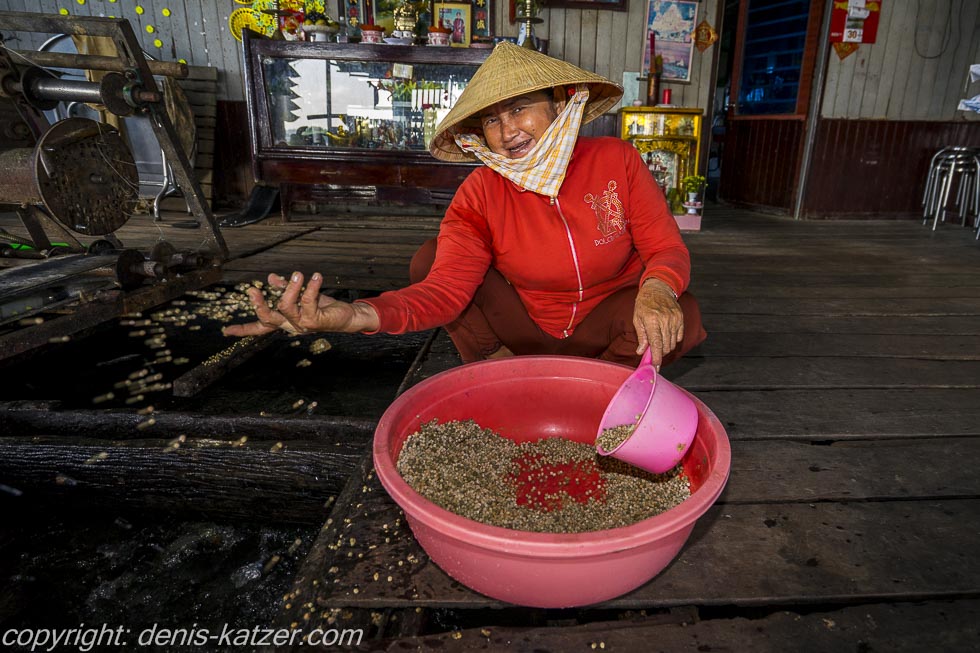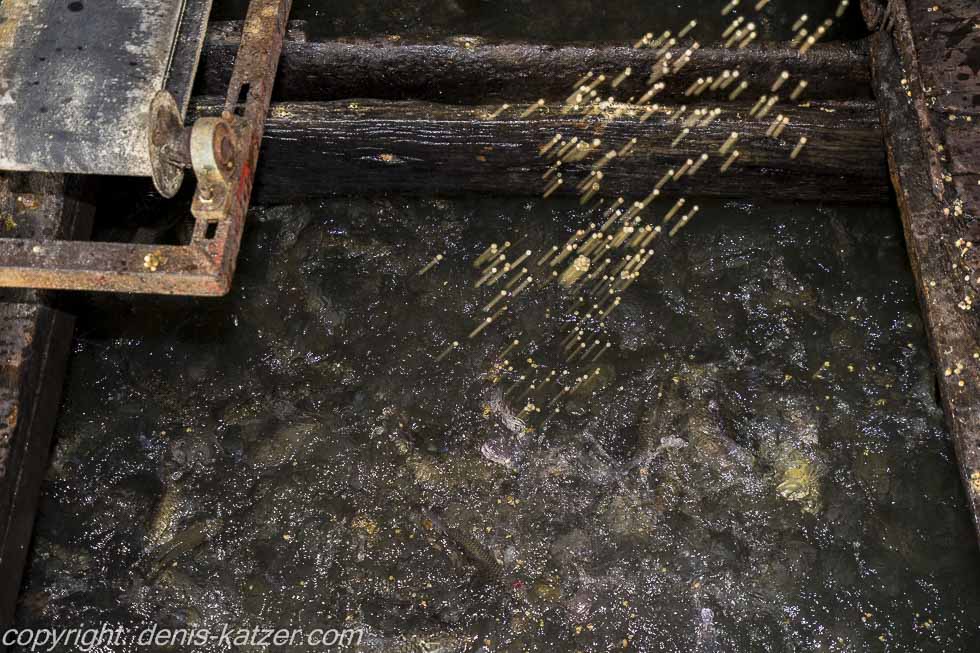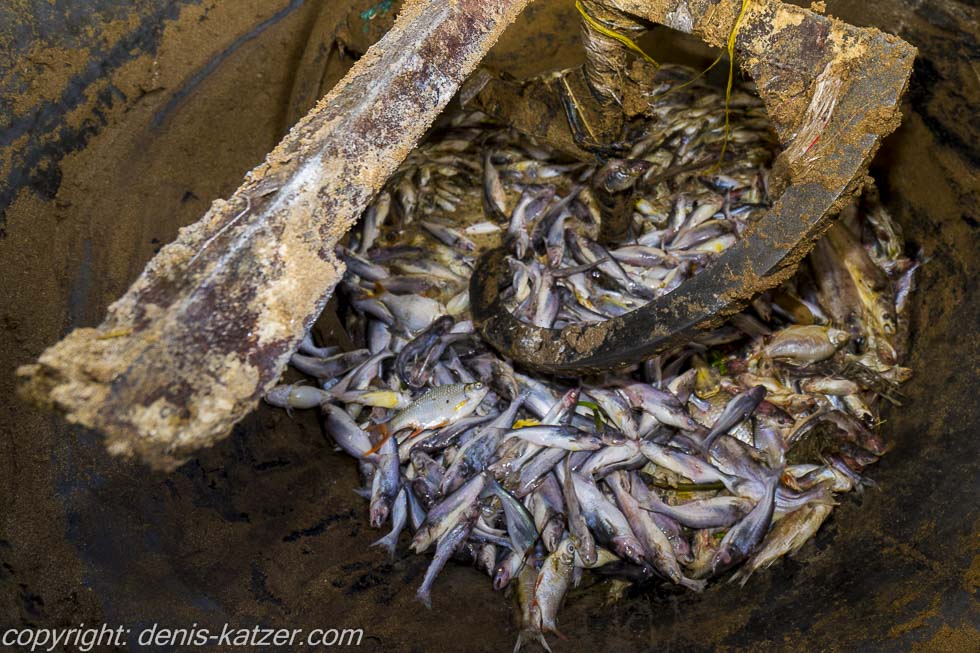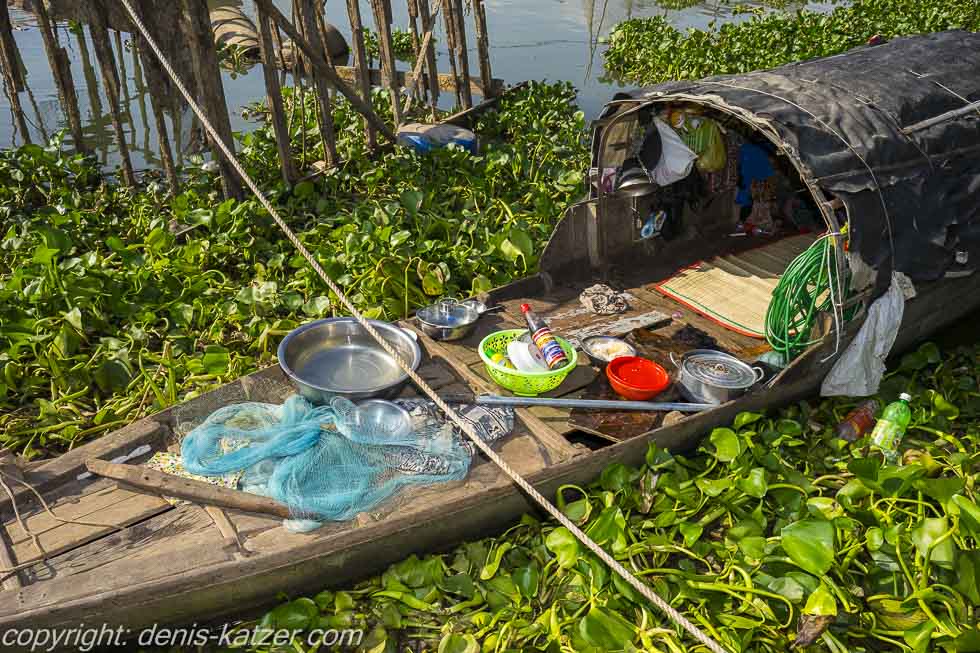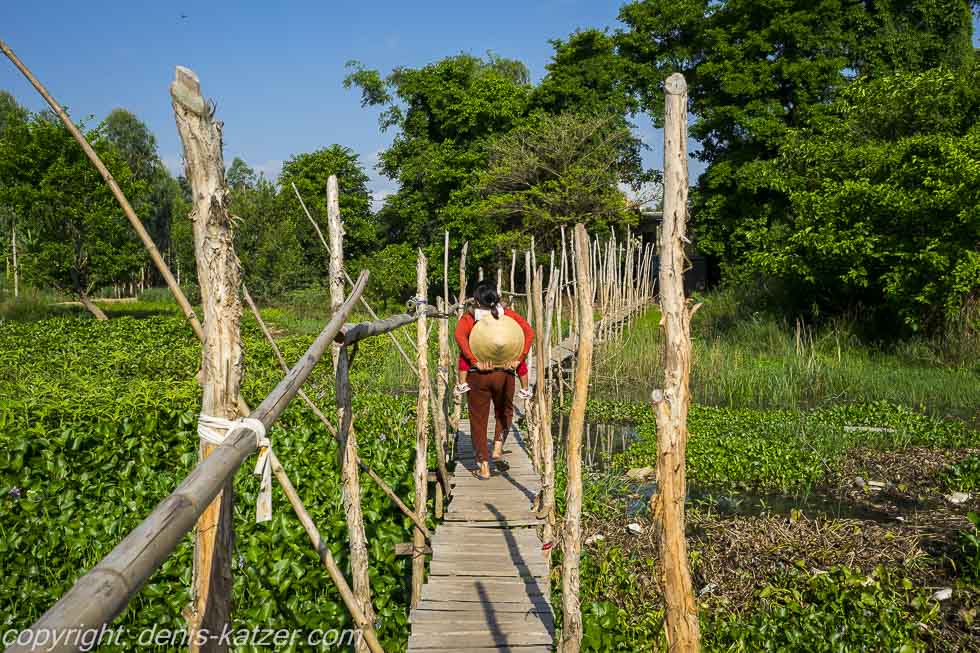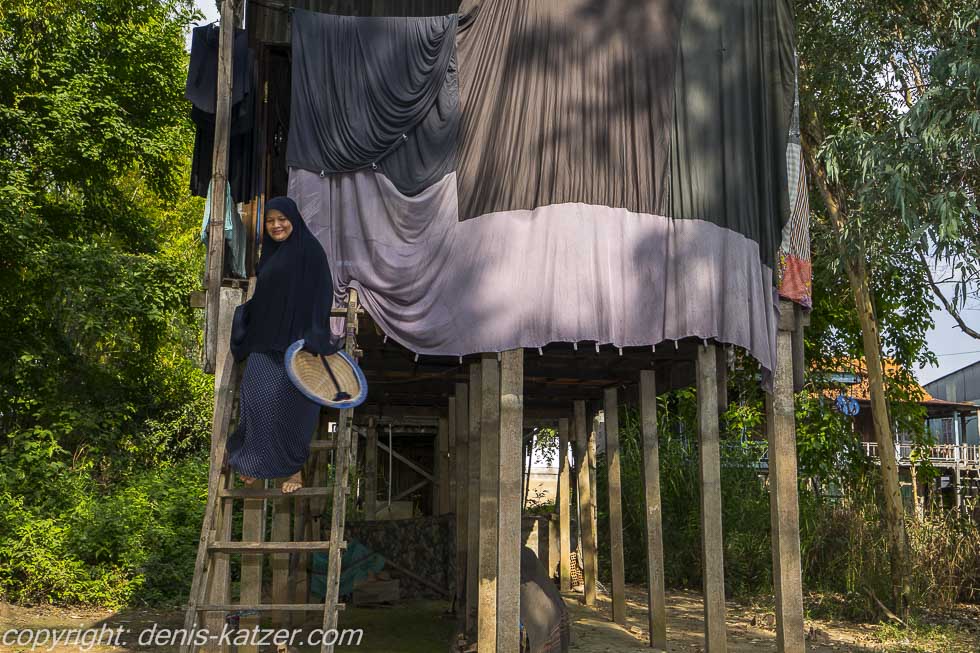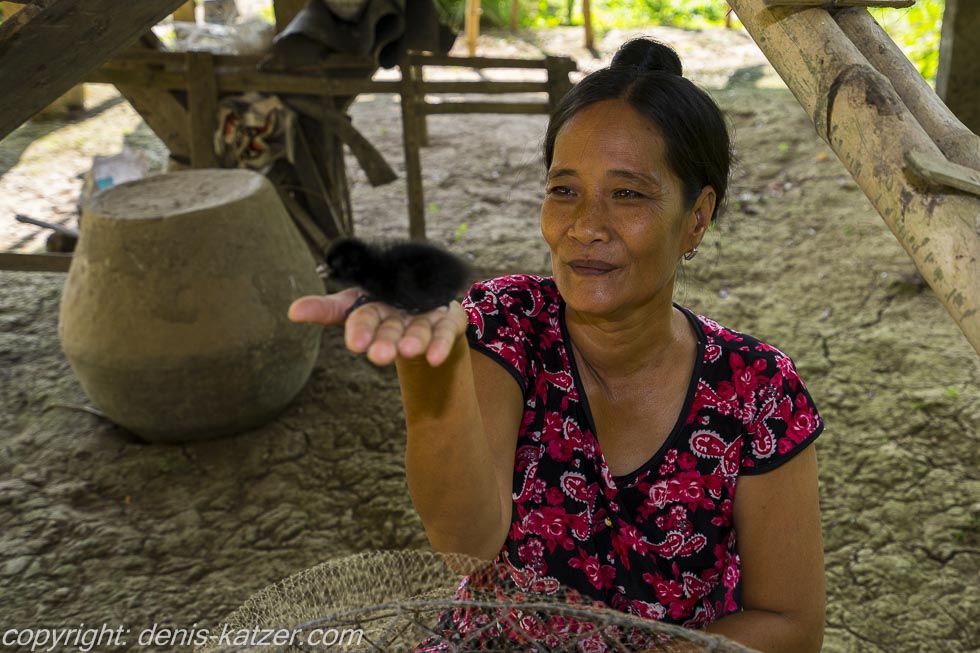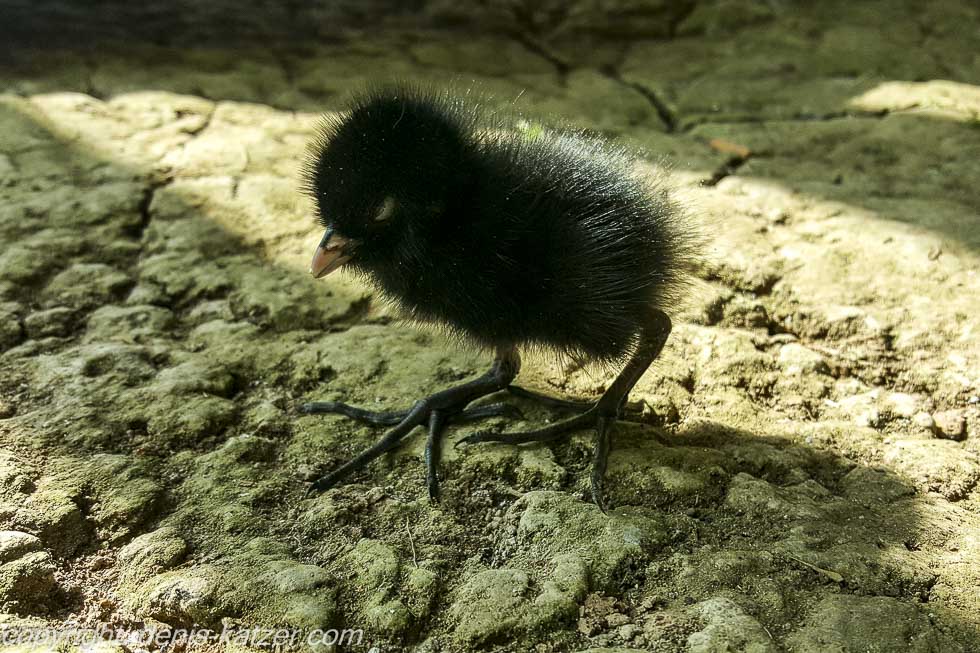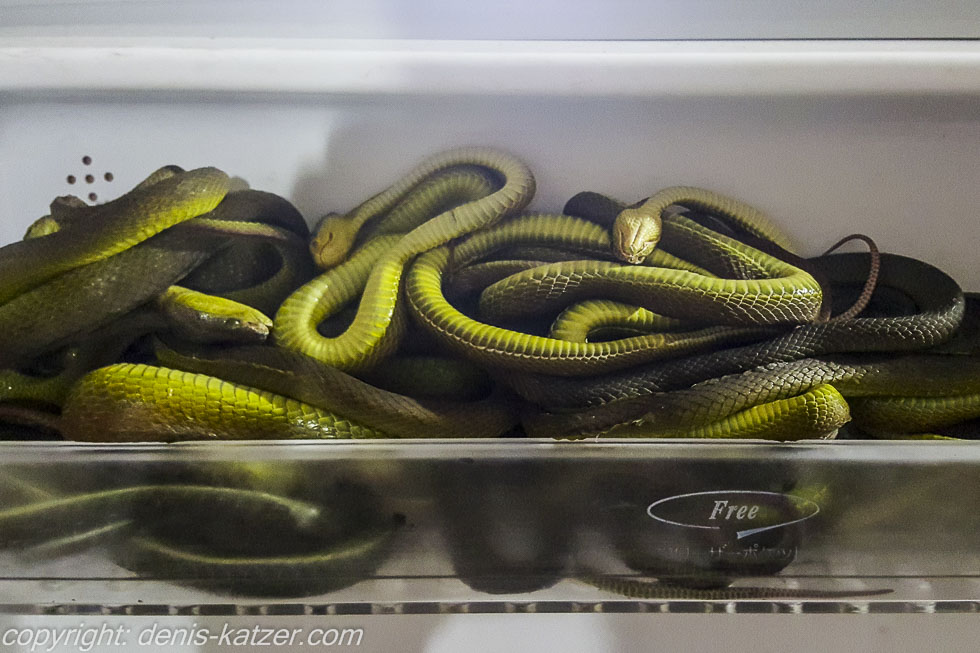
Floating market – snakes in the fridge
N 10°41'50.7'' E 105°07'35.9''
Date:
27.03.2017 until 30.03.2017
Day: 636 – 639
Country:
Vietnam
Province:
An Giang
Location:
Châu Đốc
Latitude N:
10°41’50.7”
Longitude E:
105°07’35.9”
Daily kilometers:
20 km
Total kilometers:
23,228 km
Maximum height:
14 m
Total altitude meters:
70.321 m
Sunrise:
05:59 a.m. – 05:58 a.m.
Sunset:
6:10 pm
Temperature day max:
37°C
Temperature Day Sun:
57°C
(Photos of the diary entry can be found at the end of the text).
Tock! Tock! Tock!, it chugs around us in a wide variety of tones. Houseboats, cargo boats, longboats, ferryboats and all the other boats on the Mekong rattle back and forth. I’m sitting on a longboat with Tanja, sailing along the banks of the small, lively town of Châu Đốc, close to the Cambodian border. Our captain is a Vietnamese woman. Accompanied by her young daughter, she drives tourists from all over the world around in her boat. As it is obviously low season, or simply because we are lucky, we and another German are the only guests. “A mighty river,” Tanja marvels at the Mekong, which has its source in Tibet and flows through China, Myanmar, Laos, Thailand and Cambodia before emptying into the China Sea in a huge delta not far from here. Tock! Tock! The lazily flowing brown river, which is said to be between 4350 km and 4909 km long and thus one of the twelve longest rivers on earth, chugs and swims tirelessly.
“That’s the floating market over there,” explains our captain in poor English. Numerous large and many small, sometimes colorfully painted floating barges lie at anchor. We can see the hustle and bustle from afar. Women and men gesticulate and shout eagerly, offering their wares.
The cargo holds of the many barges, barges and rowing boats are loaded to the brim with coconuts, bananas, watermelons, potatoes, rice and many other tropical fruits. Smaller barges are rowed by their owners using only muscle power. There is an exuberant, sometimes hectic atmosphere. Some of the boat dealers raise their hands. “Xin chào!” (Hello), we return their greeting.
“Have you noticed that there’s a pole on each of the sales barges with the product they’re selling hanging from it?” asks Tanja. “Now that you mention it.” “And that many of the boats were decorated with colorful eyes on the bow?” “Yeah, it looks kind of nice. The boatmen think it protects them from ghosts and the evil eye.” “Well, I hope it helps too.” “A strong faith moves mountains and if a boat owner has been spared the evil eye all his life, it has obviously helped him,” I reply.
Our helmswoman steers her longboat through the reed-covered bank. We get out and follow it over a long, very rickety wooden footbridge to a Muslim village. The inhabitants of the simple huts on wooden stilts are poor. The contrast between our lives and theirs is extreme and shows us again and again the huge gap between prosperity and subsistence level. Above all, it shows us what a privileged life we are allowed to lead and how immensely lucky we were to have been born at the right time in the right place on our mother earth.
As we continue our journey across the mighty Mekong, along its banks lined with rusty tin huts and the sometimes lovingly designed floating houses, I reflect on our exciting, varied and unforgettable journey over the past two years. “This is a fish factory,” says the helmswoman of our barge and moors up next to a rusty, floating tin hut. She explains that thousands and thousands of fish live under the house. As proof, she lifts a few wooden planks off the floor and throws fish food into the water that appears. The water immediately begins to boil. The fish dart around like madmen, behaving like maniacs to get to the food, so that some of them jump onto the planks in their exuberance and gasp for air. “Hi, hi, hi,” the woman laughs at our astonished expressions and explains that the fish are bred in tanks and when they are big enough, they are loaded alive into the belly of a ship to bring them fresh to Ho Chi Minh City. “Alive?” I ask. “Yes, alive. The hold of the fish transporter lies in the water and is flushed by the river water during the journey,” we understand.
In the evening we find another one of the simple little restaurants. The woman cooks at a stand in front of her soup stall, where there are a few plastic chairs and the man washes the plates. As is so often the case, we can’t read the menu. Tanja seeks out the cook and points to one ingredient or another. Seeing no vegetables, she runs to the cook’s fridge and opens it to hopefully discover what she is looking for. “Ohh!”, I hear her exclaim, whereupon the fridge door slams shut again. “What?” I ask, a little amused, as her face makes a startled impression on me. “You won’t believe it. There are snakes in there.” “What, snakes? It can’t be.” “But it is. You can take a look for yourself.” I immediately get up, open the fridge and am so startled that I immediately close it again. “Ha, ha, ha. I told you it was full of snakes,” Tanja laughs heartily, after my face must look horrified this time…
If you would like to find out more about our adventures, you can find our books under this link.
The live coverage is supported by the companies Gesat GmbH: www.gesat.com and roda computer GmbH http://roda-computer.com/ The satellite telephone Explorer 300 from Gesat and the rugged notebook Pegasus RP9 from Roda are the pillars of the transmission. Pegasus RP9 from Roda are the pillars of the transmission.

